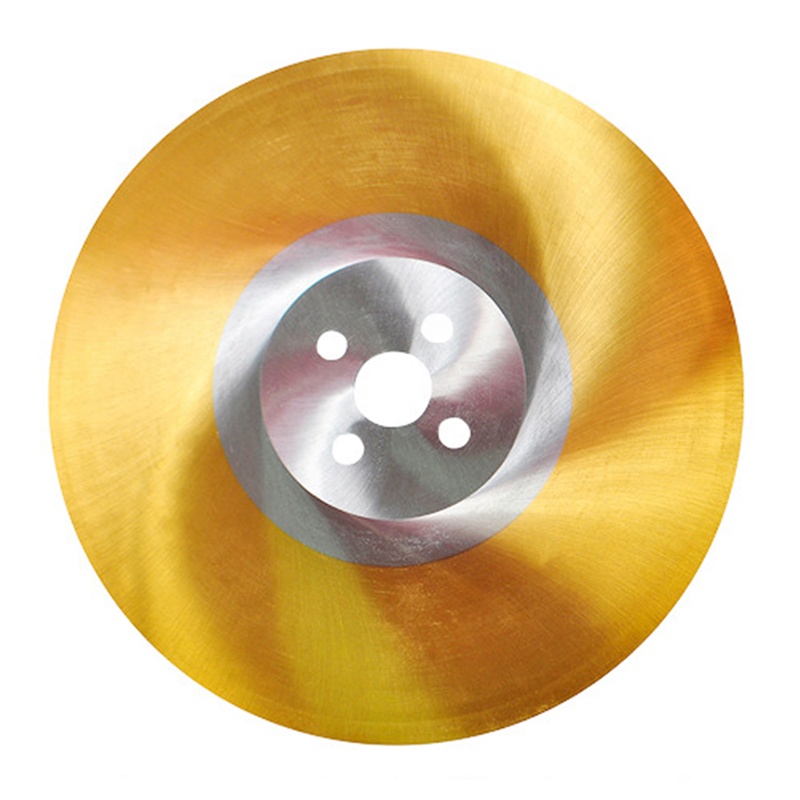The Ultimate Guide to HSS Saw Blades: Precision Cutting for Demanding Applications
Understanding HSS Technology: Metallurgy That Makes the Difference
High-Speed Steel (HSS) saw blades represent a revolutionary advancement in cutting technology, combining iron alloys with strategic additions of tungsten (14-18%), molybdenum (5-8%), chromium (3-4.5%), vanadium (1-3%), and cobalt (5-10%). This sophisticated metallurgical recipe enables blades to retain exceptional hardness at temperatures exceeding 600°C – a critical advantage where ordinary carbon steel blades would rapidly degrade. Unlike standard blades, HSS variants maintain a Rockwell Hardness (HRC) of 62-67 even under extreme thermal stress, translating directly to sustained cutting performance during prolonged operations 1.
Shanghai Easydrill leverages precisely controlled vacuum heat treatment processes to optimize the crystalline structure of their M2, M35, and M42 grade HSS blades. This meticulous approach ensures uniform hardness distribution through the tooth geometry while maintaining necessary toughness in the blade body – a balance crucial for preventing catastrophic tooth failure during high-load cutting applications.
Technical Advantages That Transform Cutting Operations
- Unmatched Heat Resistance & Wear Performance
HSS blades outperform conventional carbon steel blades by 3-5x in high-temperature cutting scenarios. Research indicates that when cutting speed increases from 170 mm/min to 220 mm/min, HSS blades exhibit only 19% higher initial wear compared to 56% wear acceleration in ordinary tools – demonstrating superior thermal stability 1. This directly translates to extended service intervals and reduced downtime. - Precision Surface Quality
Controlled testing reveals that HSS blades maintain superior surface finishes (Ra values) due to their ability to retain sharp cutting edges. When feed rates increase from 425 mm/min to 550 mm/min, HSS blades show only a 10-14% roughness increase versus 25%+ in alternatives 1. This makes them indispensable for finish-critical applications in aerospace and automotive manufacturing. - Versatility Across Materials
The unique hardness-toughness balance enables efficient processing of diverse materials:- Metals: Steel alloys (<45 HRC), aluminum, brass, ductile iron
- Composites: CFRP, GFRP without delamination
- Plastics: Acrylics, nylon, reinforced thermoplastics
- Wood: Hardwoods, laminated boards with embedded fasteners
Comparative Performance Table:
| Property | HSS Saw Blades | Carbon Steel Blades |
|---|---|---|
| Max Operating Temp | 600°C+ | 250°C |
| Hardness Retention | 95% at 500°C | <50% |
| Typical Lifespan | 300-500 cuts (20mm steel) | 80-120 cuts |
| Surface Roughness (Ra) | 0.8-1.6 μm | 3.2-6.3 μm |
Industrial Applications Where HSS Blades Excel
Metalworking & Machinery
Shanghai Easydrill’s HSS blades dominate in metal service centers processing structural steel, pipes, and extruded profiles. Their variable tooth geometries (Triple Chip Grind, Alternate Top Bevel) prevent harmonic vibration when cutting thin-walled tubing, while specialized coatings like TiN boost lubricity in stainless steel cutting.
Automotive Manufacturing
Production lines utilize pulsed-laser welded HSS blades for:
- Engine component machining (nodular iron castings) 1
- Transmission gear blanking
- Suspension component fabrication
The blades’ vibration damping characteristics prove essential for maintaining ±0.1mm dimensional tolerances in high-RPM automated saws.
Aerospace & Defense
For critical nickel alloys (Inconel 718, Ti-6Al-4V), cobalt-enriched M42 blades run at optimized parameters:
- Cutting Speed: 80-120 SFM
- Feed Rate: 0.8-1.2 mm/tooth
- Coolant: 8% synthetic emulsion
This prevents work hardening while achieving Ra<1.6μm surface finishes required for flight components.
Selecting the Optimal HSS Blade: Key Parameters
Tooth Geometry Considerations
- Hook Angles: +10° to +20° for soft metals; -5° for brittle materials
- Tooth Density: 60-80 TPI for thin-wall tubing; 8-14 TPI for solid stock
- Gullet Design: Deep curvilinear profiles for efficient chip evacuation
Performance Optimization Guidelines
Based on experimental design analysis of machining parameters 1:
- Prioritize cutting speed (Vc) control for tool life – 20% overspeed causes 56% wear acceleration
- Adjust feed rate (F) for surface finish – 30% increase raises Ra by 14% maximum
- Balance depth of cut (Dp) with chip load – never exceed blade width × 1.2
Failure Prevention Tactics
- Monitor harmonic vibrations indicating tooth damage
- Inspect for micro-chipping at 50% of tool life
- Use strobe lights to verify chip formation consistency
Shanghai Easydrill: Engineering Cutting Solutions
As an ISO 9001-certified manufacturer, Shanghai Easydrill combines German precision grinding technology with localized R&D to produce HSS blades meeting DIN 1837B standards. Their proprietary features include:
- Patented Tooth Formations: Asymmetric geometries that reduce cutting forces by 20%
- Nano-Crystalline Coatings: AlCrN layers with 0.3μm thickness for reduced friction coefficient
- Dynamic Stability Testing: Laser-verified runout under 0.02mm at 3000 RPM
Their product range spans from 80mm portable bandsaw blades to 650mm industrial cold saws, all featuring computer-tempered bodies and brazed carbide tips for specialized applications.
The Future of HSS Technology
Leading manufacturers like Shanghai Easydrill are pushing boundaries with:
- Smart Blades: Embedded microsensors monitoring temperature/stress in real-time
- Hybrid Substrates: HSS matrix with 12% ceramic particulates for cutting HRC 50+ materials
- Sustainable Manufacturing: Closed-loop recycling of tungsten and cobalt
Conclusion: The Precision Advantage
HSS saw blades remain indispensable in modern manufacturing where precision, efficiency, and surface quality converge. By understanding the technical parameters governing their performance – cutting speed thresholds, feed rate impacts on finish, and wear progression patterns – manufacturers can unlock 30-50% productivity gains. Shanghai Easydrill continues to innovate at the metallurgical frontier, delivering cutting solutions that transform raw productivity into competitive advantage.
Experience the HSS difference – Contact Shanghai Easydrill today for material-specific blade recommendations and cutting parameter optimization.
Post time: Jun-16-2025
